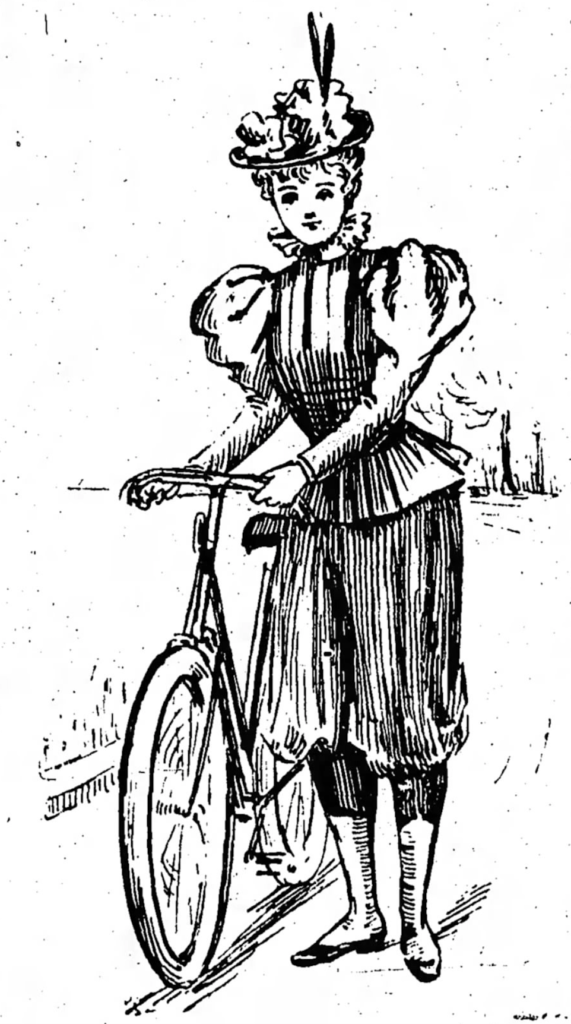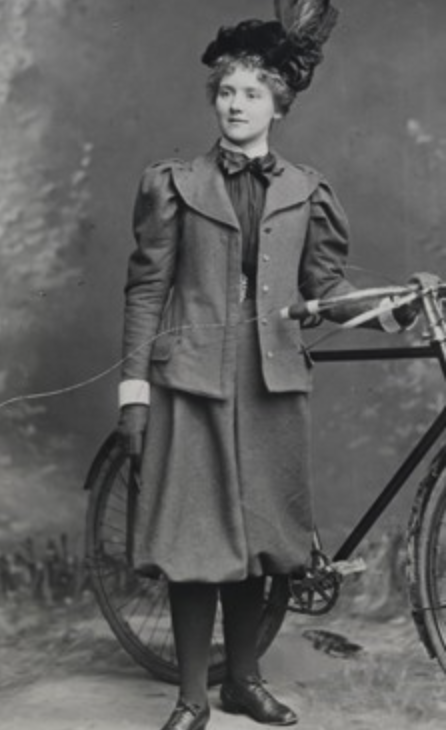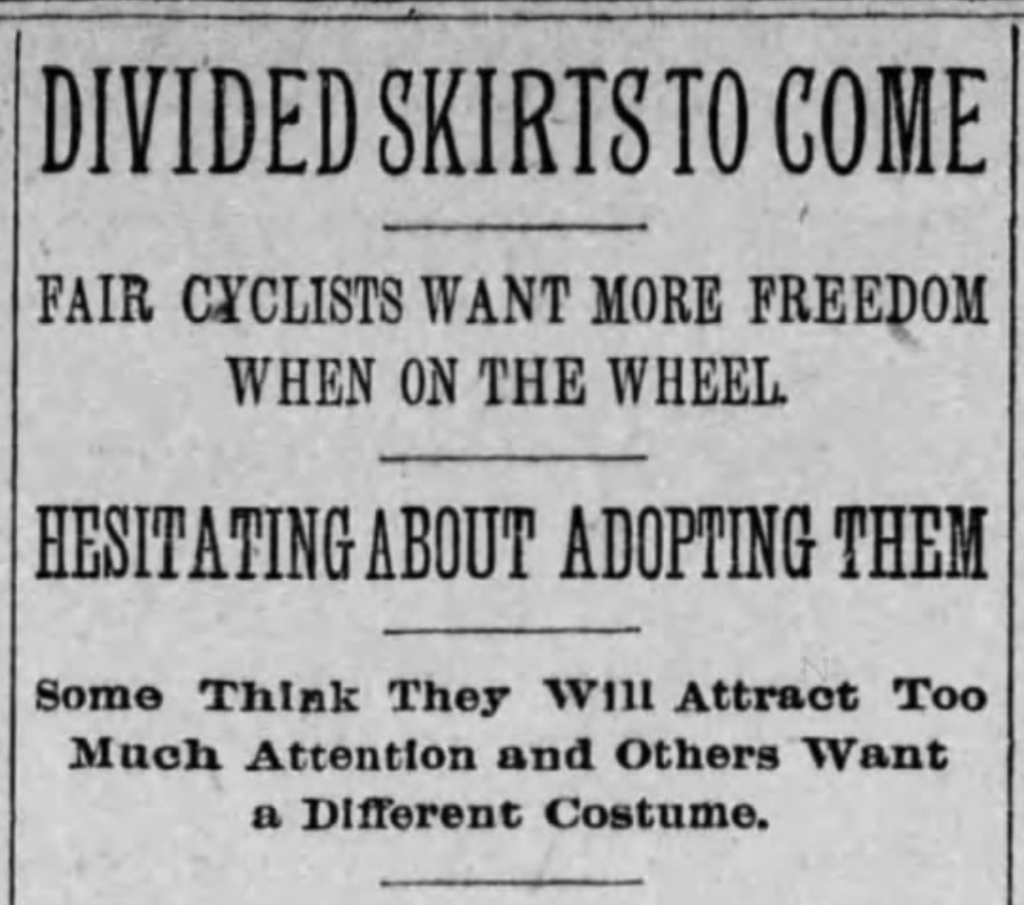The Rational Dress Society and Victorian Dress Reform
In 1881, a group of high society women gathered in London to form a new organization. They named their group the Rational Dress Society, intending to reform Victorian women’s dress. The group came up with criteria for the perfect dress. It included:
- Freedom of Movement
- Absence of pressure over any part of the body
- No more weight than is necessary for warmth, and both weight and warmth evenly distributed.
- Grace and beauty combined with comfort and convenience
- Not departing too conspicuously from the ordinary dress of the time
Their ideas were revolutionary and controversial. Typical Victorian dress styles incorporated heavy fabrics, tight corsets, bustles, hoop skirts, and extravagant ornamentation. The women argued that dress reform would allow them to participate in activities like cycling. Bicycles had become a symbol of freedom for many women who found the sport liberating and emancipating.
A founding member of the society was Viscountess Florence Wallace Pomeroy, also known as Lady Harberton. Lady Harberton, the daughter of wealthy landowners, married James S. Pomeroy. He later became the 6th Viscount Harberton. In 1880, Lady Harberton took up the cause of dress reform. She loved to cycle, but heavy, long skirts prevented her from enjoying the activity. She championed the reformed dress, which consisted of baggy pantaloons worn underneath a knee-length skirt. She also invented the divided skirt, which initially evoked jeers on both sides of the pond. Some feared that trifling with a traditional women’s dress was a step down a path to loosening moral values.
Lady Harberton
In 1883, the Rational Dress Society sponsored an exhibition held in London. The exhibit included shorter dresses, divided skirts, “costumes for climbing for lady mountaineers, and a costume for walking.” One man reported to The Times that the women in his family discarded their corsets and found new freedom in dancing, walking, tricycling, lawn tennis, and other open-air exercises. They vowed never to return to corsets and heavy skirts. Attitudes for many women (and men) were undergoing a seismic shift. The “woman of the future” wanted freedom in her clothing – and freedom within other aspects of her life.
The struggle for rational dress came to a head after an incident in 1898. Lady Harberton went cycling in Surrey. She stopped for lunch at the Hautboy Hotel but was turned away for improper dress. Lady Harberton sued the hotel but lost the case because the hotel had offered alternative seating in the bar. Nevertheless, the case brought attention to rational dress and a victory for women who advocated for it. Lady Harberton spent decades promoting clothing that would make life easier for women. Later in her life, she also became an advocate for the women’s suffrage movement. Lady Harberton died in 1911. The Guardian eulogized her as an “enthusiastic and undaunted advocate” for dress reform.
If you would like to learn more about Lady Harberton, or the Rational Dress Society, search Newspapers.com™ today!



